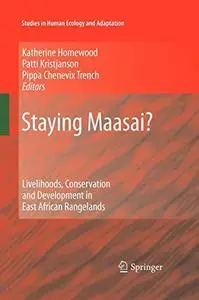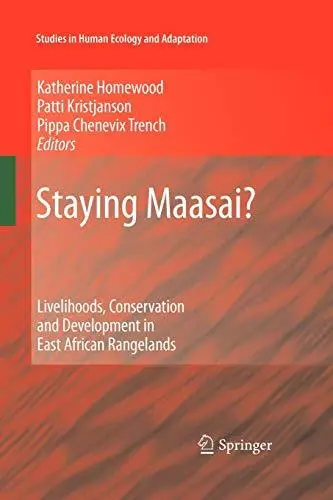Staying Maasai?: Livelihoods, Conservation and Development in East African Rangelands By Katherine Homewood, Patti Kristjanson, Pippa Chenevix Trench (auth.), Katherine Homewood, Patti Kristjanson, Pippa Chenevix Trench (eds.)
2009 | 418 Pages | ISBN: 0387874917 | PDF | 7 MB
2009 | 418 Pages | ISBN: 0387874917 | PDF | 7 MB
People, livestock and wildlife have lived together on the savannas of East Africa for millennia. Their coexistence has declined as conservation policies increasingly exclude people and livestock from national wildlife parks, and fast-growing human populations and development push wildlife and pastoralists onto ever more marginal lands. The result has been less wildlife, and more pastoral people struggling to diversify their livelihoods as access to pasture and water becomes harder to find. This book examines those livelihood and land use strategies in detail. In an integrated research effort that involved researchers, local communities and policy analysts, surveys were carried out across a wide range of Maasai communities providing contrasting land tenure and national policies and varying degrees of intensification of agriculture, tourism and other activities. The aim was to create a better understanding of current livelihood patterns and the decisions facing Maasai at the start of the 21st Century in the context of ongoing environmental, political, and societal change. With a research design that linked quantitative and qualitative methods and research teams across multiple pastoral sites for the first time, a comparison of livelihood strategies and returns to livestock, crops, wildlife tourism, and other activities across Kenyan and Tanzanian Maasailand was possible. While livestock remains the critical anchor for most Maasai households, many are obtaining income from a variety of alternative sources. Unfortunately, income from wildlife/tourism, an option seen as most desirable by many because of its potential to provide economically and environmentally ‘win-win’ situations, still benefits relatively few Maasai. Similarly, although governments favor agricultural intensification, significant crop income or enhanced food security from subsistence cropping elude most.This book provides a rich source of new data from across Maasailand and its unparallelled multi-site comparative analyses give valuable lessons of broader applicability. It is a valuable resource for anyone, researchers, development workers and policy makers, who is concerned with improving environmental as well as economic security on the wildlife-rich Maasai pastoral lands in Kenya and Tanzania.



